Systems Furniture Workstations
Do more… in less space.
Commercial real estate rates are increasing steadily, and as your company grows, your office space requirements grow as well, right? What if you could better utilize your office space? What if you could design your office in a way that allows your team to work more collaboratively but without increasing your footprint?
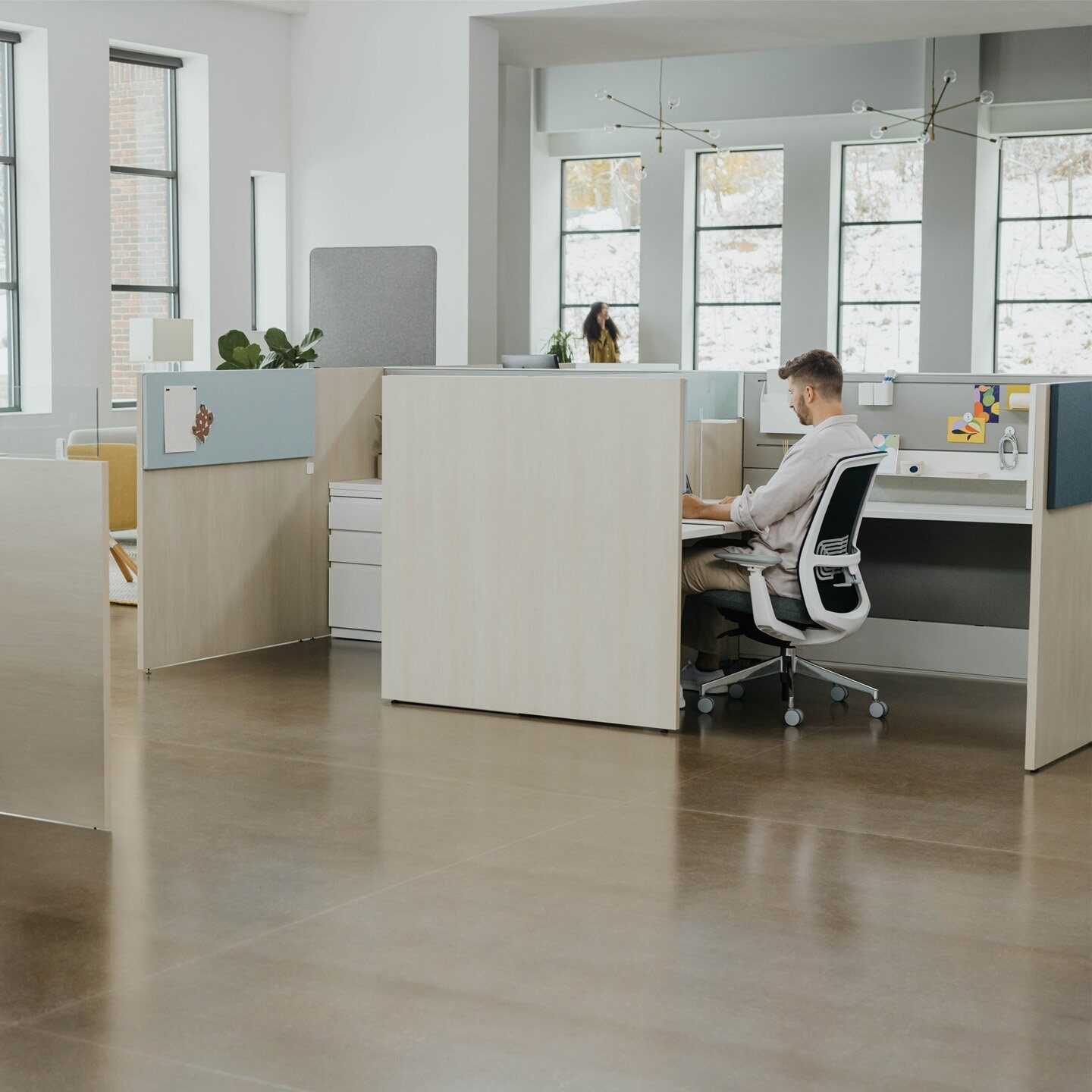
What is Systems Furniture, and How Does it Work?
Systems furniture is simply a modular system for building workstations of almost any shape, size or configuration. Think of it as a Lego kit for office workstations. The traditional office cubicle is one example of a systems furniture workstation… but it can also be so much more than a tall grey box in the middle of your office.
Systems furniture workstations are typically a panel-based system. This means that the work surface and storage components in a workstation is supported by the panels that form the backbone of each multi-station configuration. Multiple workstations sharing panels reduces the total number of panels required for your floorplan layout.
Power and data cabling are usually run through a systems furniture workstation’s panels, allowing power and data to be transferred across an open office layout without requiring power poles to the ceiling or running cables along the floor, which can be a safety hazard.
Since systems furniture is modular by nature, you can go back at any time and add, remove or change components, individual workstations or even your entire floorplan.
Why Would I Want to Use Systems Furniture? What are the Benefits?
There are a few key reasons why most offices are deciding to use systems furniture. The benefits most frequently cited by users include their flexibility, cost and space efficiency as well as the level of customization they allow.
Flexibility
Need to find somewhere to fit your new hire or create a collaboration space within your office? No need for renovation, systems furniture can be dismantled, rearranged or moved and reassembled quickly, without waste and the sort of disturbance caused by a renovation.
Cost & Space Efficiency
Since systems furniture workstations can share panels, they require less total material for the full layout configuration. This also means that systems furniture workstations can be configured to occupy much less space than a traditional standalone desk with minimal impact on the usable storage or worksurface space available for each user.
Customization
When designing a layout with systems furniture, you can configure the workstations to suit the exact needs and requirements of each specific user or type of user.
For example, the part of the floorplan dedicated to the accounting department might have higher panels for additional auditory privacy to support heads down, focused work than the section of the floor dedicated to the marketing team who need to collaborate and share ideas daily.
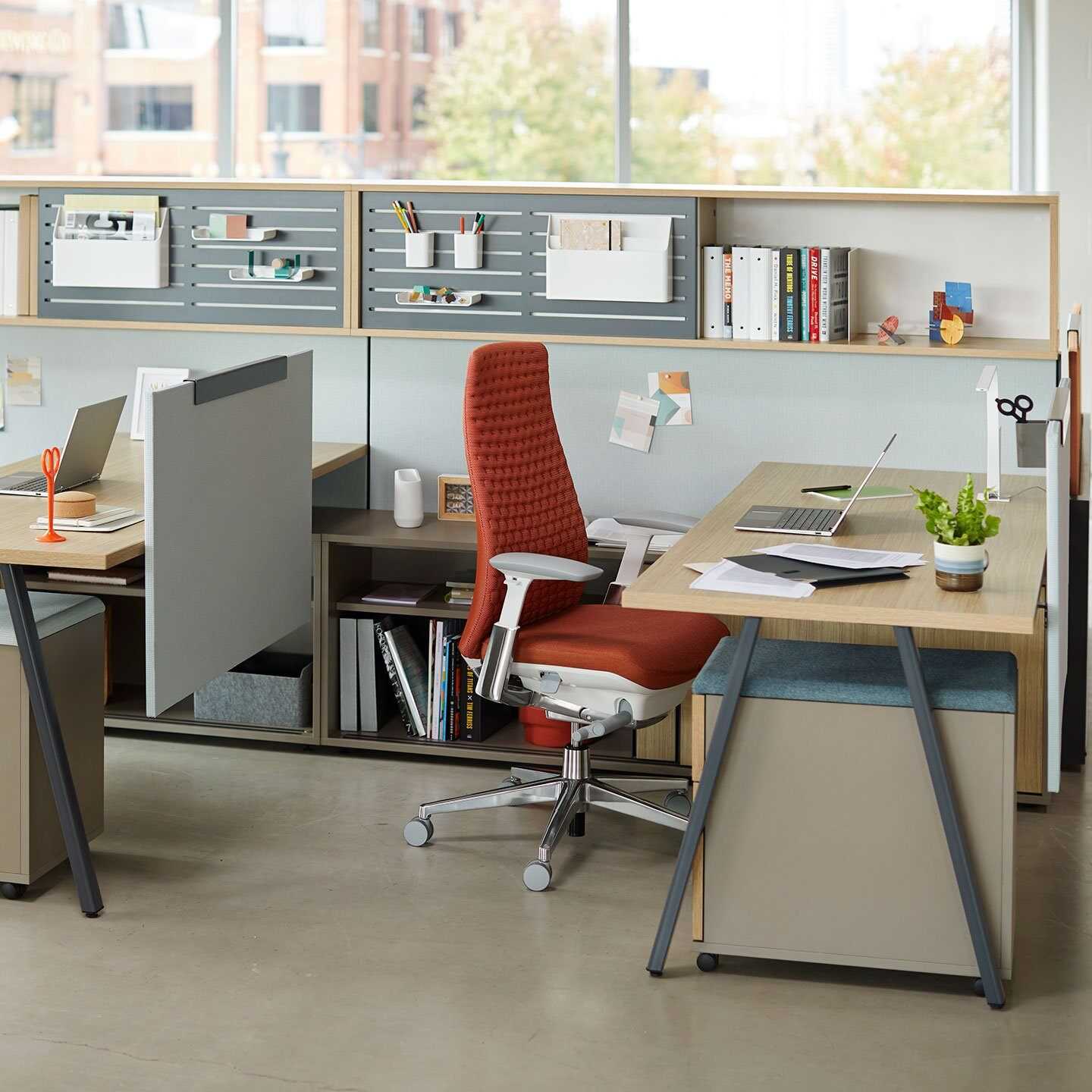

Visit Our Online Store
Take the work out of furnishing your workspace.
Browse through countless options and choose ergonomic office solutions that make you feel best from the comfort of your home (or anywhere). Create your team or home office in a few clicks and have your items delivered straight to your door.
Why Might I NOT Want to Use Systems Furniture? What are the Downsides?
Systems furniture is an excellent solution for many businesses, but it is not the best fit for every office or situation.
The number one downside to systems furniture that we hear from our customers is the potential lack of auditory privacy. Systems furniture workstations share panels and are, therefore, right beside one another. This proximity can lead to a noisier workspace if the right preventative measures aren’t considered.
Another potential risk inherent to systems furniture layouts is the enhanced risk of visual distraction. Depending on what height you choose for your panels, users may feel like they have very little visual privacy from their neighbours. There are a variety of ways you can mitigate this risk and improve visual privacy in your office, but it is a concern to keep in mind nonetheless.
The final downside is not so much an actual issue with systems furniture itself as it is with the perception some customers have of systems furniture. While systems furniture is completely modular and therefore very flexible, it is just that, modular not moveable. A professional furniture installer will still be required to reconfigure your workstations; you will not be able to move it from one location to another yourself.
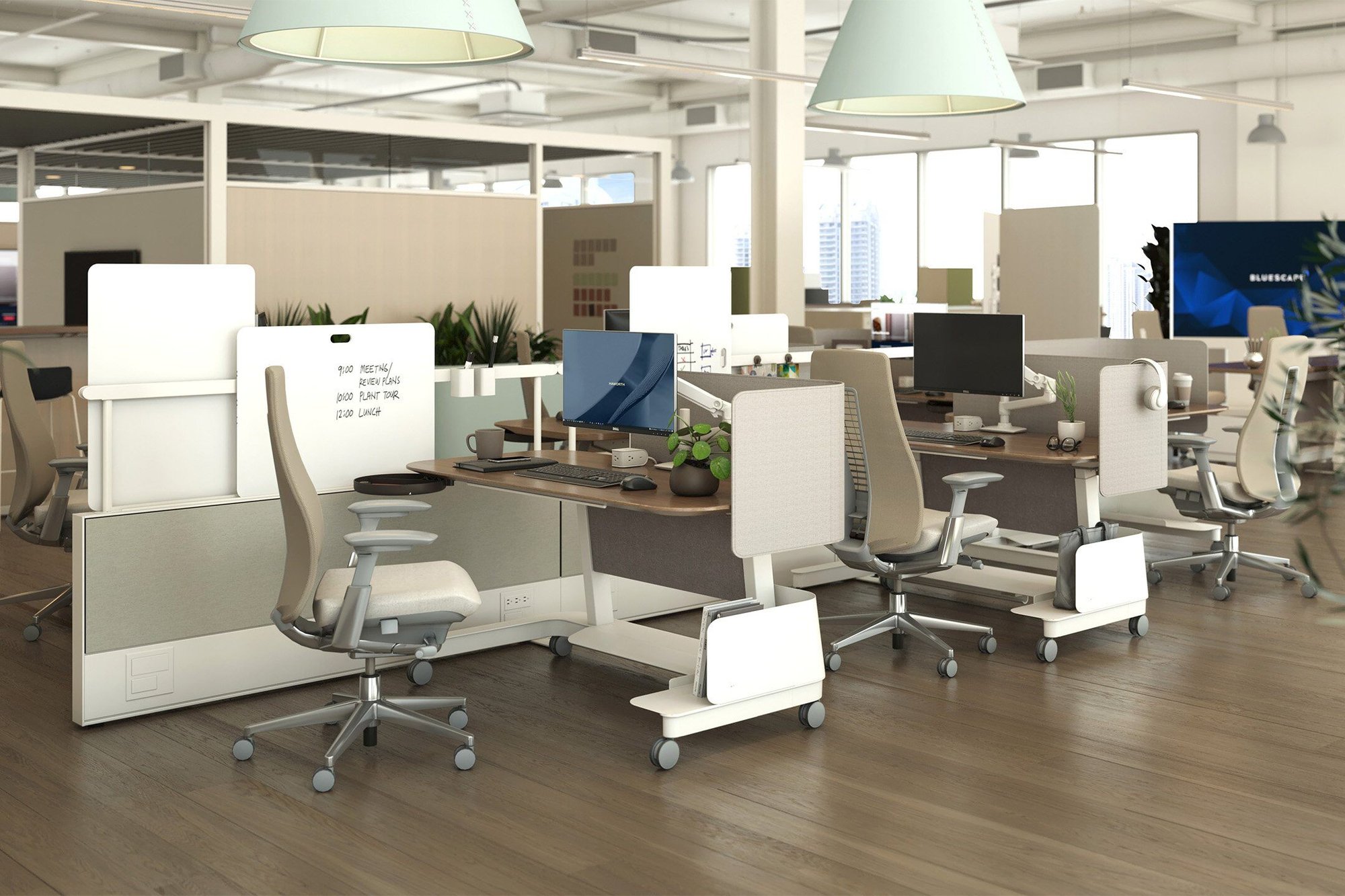
Finishes & Specs of Systems Furniture Workstations
The specific brand and product line you choose for your systems furniture will determine the finishes available to you, and hopefully, the exact specifications of your systems furniture will depend on the specific needs of your business.
However, there are still some standard finishes and specs that are inherent to most systems furniture products.
Fabric upholstery is the most popular (and least expensive) finish choice for workstation panels. There are plenty of other options available, though, if you are looking for an enhanced aesthetic or increased functionality.
Not only is there a considerable variety of colours and pattern fabrics available but you can upgrade the upholstery to a laminate or veneer, a writeable whiteboard surface, a tack board, or a slotted accessory rack for storing papers, pens and more.
The height of the panels is another area where you have much ability to customize your system. Panels can be as short as 34” or as tall as 74”, though they are most commonly 42”, 50”, or 58” unless you are adding a “stacker” on top.
These stackers can also be customized. You can order them in matching or complementary colours and finishes, or instead, you can use glass stackers. Glass stackers are available in clear, frosted or framed styles and are typically used to provide additional auditory privacy without blocking the light or visibility of a seated user.
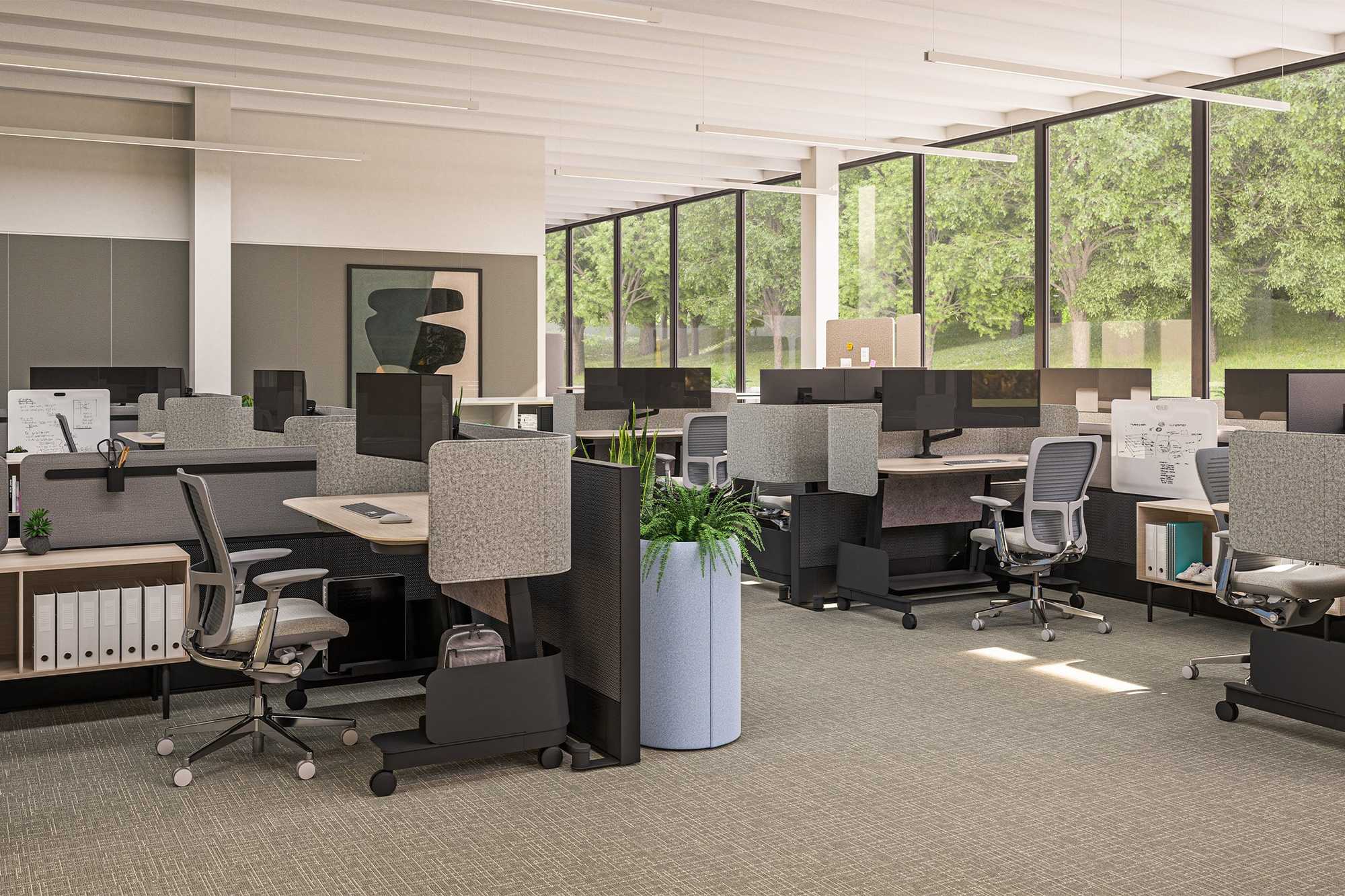

Panel-based workstations are like the ultimate LEGO kits for your office. Need help designing the perfect setup?
Check out our Office Furniture Buyer’s Guide!
You Should Buy Systems Furniture IF:
Our customers most satisfied with their decision to buy systems furniture workstations for their team are organizations that:
- Need a workstation that is easily customizable and collaborative
- Have expanding teams and space is limited
- Are looking to maximize office productivity and overall team wellness
Like we said above, when discussing the benefits, the main reasons to consider systems furniture is to create a flexible office layout that will best utilize your office space… and can be reconfigured to keep meeting those needs as they adapt and grow with your business.
If your business values flexibility in your office space or is constrained by a growing team and not enough office space for them, systems furniture is the solution you have been looking for.
You Should NOT Buy Systems Furniture IF:
While we do recommend systems furniture to most of the businesses we work with, we also recognize that there are cases where they are not the best fit. In our experience, we recommend not to use systems furniture when:
- You require complete auditory privacy
- Your team needs full visual privacy (not just seated privacy)
- You have plenty of office space and don’t mind buying everyone a standalone desk
There are plenty of ways to improve the visual privacy and auditory privacy of an office using systems furniture but unless you use panels that span from floor to ceiling, they will never provide complete privacy. This means that they are not advisable for situations where you handle confidential conversations or documents or in offices that are already prone to many loud discussions and distractions.
How Much Does a Systems Furniture Workstation Cost?
Much like we stated in our article dedicated to examining all the factors of how much systems furniture costs, there is, unfortunately, no one-size-fits-all answer to the question of cost. Systems furniture is just far too customizable.
However, after quoting thousands of these systems, we have found that most workstations fall within a predictable price range. If you are looking to buy standard-sized workstations (usually 6’ by 6’), you should budget between $1800 and $5000 per workstation.
What factors make this range so wide, you might ask? How can you determine where within that range you will fall? Here are the four elements that will most impact how much you end up paying for new systems furniture:
- Panel Height – Higher panels require additional material and will, therefore, increase the total cost of the workstation.
- Finish Selection – Your choice of finishes can significantly increase your overall price. Upgrading the panel material from fabric to laminate, veneer or whiteboard and adding glass toppers to your panels.
- Storage Capacity – Adding additional storage units (such as an undersurface pedestal or overhead hutch) increases the volume of material required and will increase your overall price.
- Height Adjustable Worksurface – Making at least one worksurface height adjustable is popular among users but the mechanism to raise the work surface will add an upcharge to the final cost.
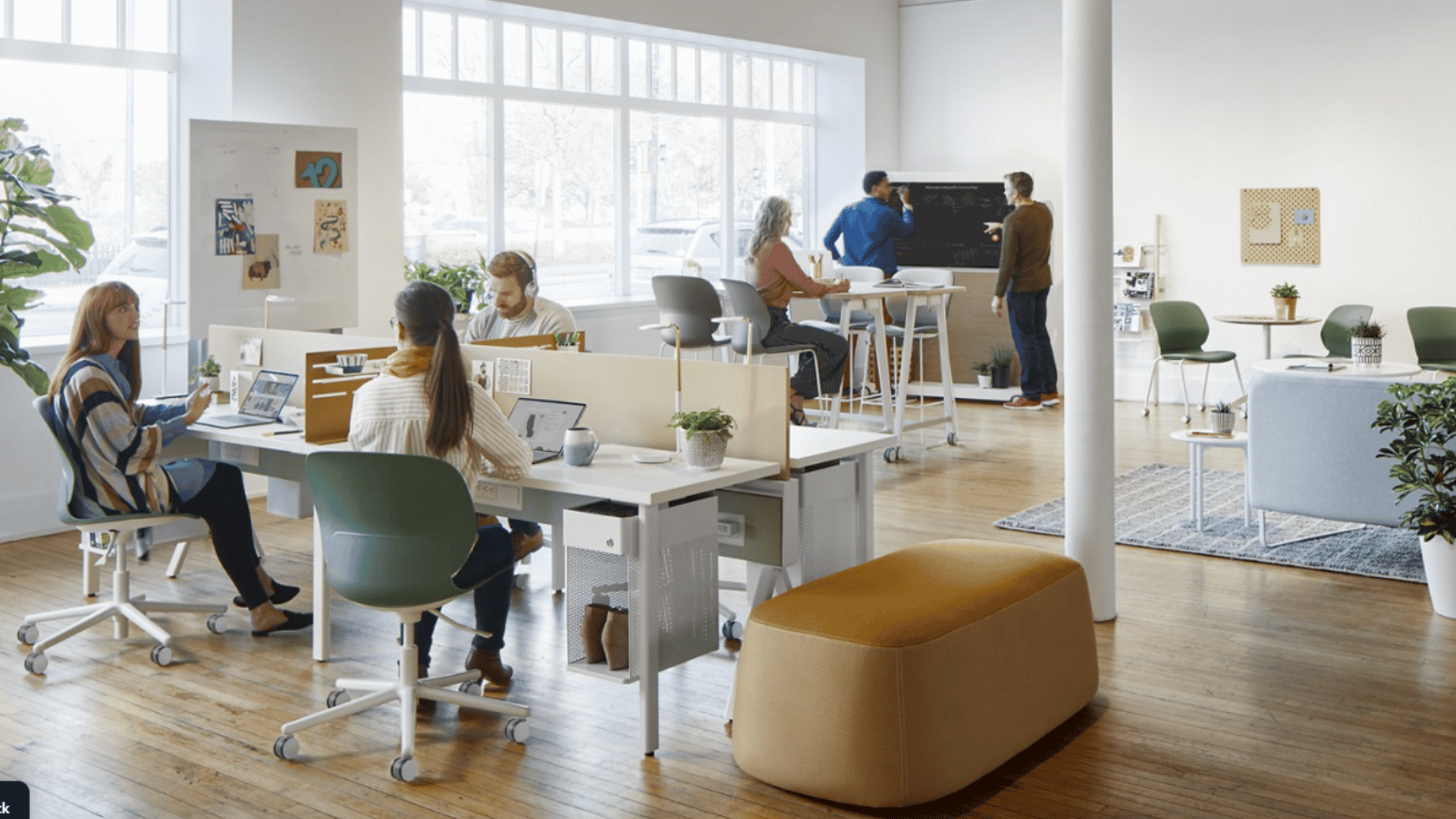
Learn about the Latest Trends in the Office World
Also learn how the office furniture you choose can impact everything from employee retention to public perception of your organization.
Request a Free Consultation
Do you have a few more questions you want help answering before you pull the trigger on systems furniture workstations for your team? Or maybe you would like to see them in action first?
We are here to help! All of our consultations are completely free, request one today and we can answer your remaining questions and arrange for a viewing of our working showroom where you can see a variety of systems furniture configurations designed for sales, finance, admin and marketing teams.

